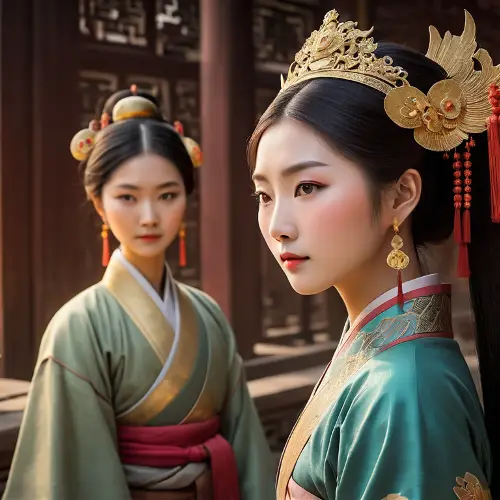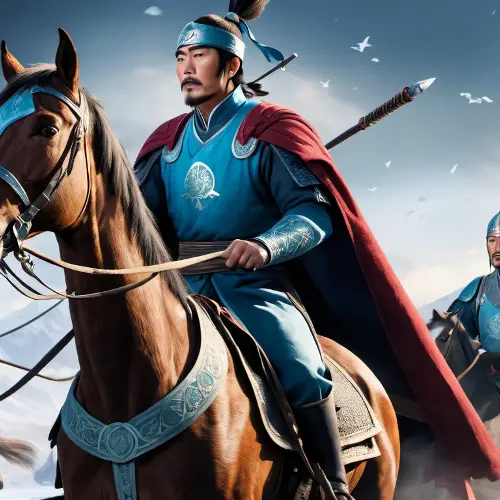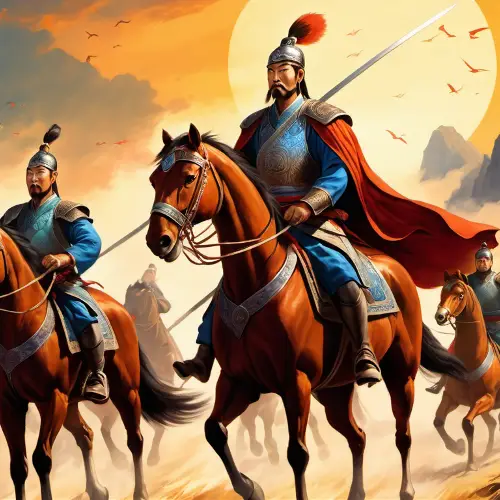December 13, 1937, Nanjing City, Japanese Army. Scene of Japanese imperialism slaughtering Chinese civilians, real photos, bloody scene, corpses, super realistic, 16k
December 13, 1937, Nanjing City, Japanese Army. Scene of Japanese imperialism slaughtering Chinese civilians, real photos, bloody scene, corpses, super realistic, 16k
December 13, 1937, Nanjing City, Japanese Army, footage of Japanese imperialism slaughtering the people of Nanjing, China, real photos, super realistic, 16k
In 1842, the defeated Chinese were forced to sign the Treaty of Nanking, a landmark in the history of unequal treaties
A hauntingly realistic depiction of a war-torn city, with remnants of battle scattered throughout the ruins. Smoke billows from destroyed buildings, adding to the atmosphere of destruction and chaos. The painting is highly detailed, capturing every intricate detail of the ruined cityscape. The style is reminiscent of Rembrandt's dramatic use of light and shadow, giving depth and emotion to the scene. This piece serves as a reminder of the devastating effects of war on innocent civilians.
The image portrays a striking contrast between the two sides involved in the signing of the Treaty of Nanking. In the foreground, there's a grand table or podium where representatives from both the Chinese and British sides sit or stand, positioned across from each other. On the left side of the image, the Chinese delegation is depicted in traditional attire, showcasing their cultural heritage. They appear troubled, outnumbered, and uneasy, reflecting their forced participation in the negotiation. Conversely, on the right side, the British delegation exudes confidence and power. They're dressed in formal, military-inspired attire, representing the imposing force of the British Empire. Their posture and demeanor display a sense of authority and dominance. The scene takes place in a grand room or open space, perhaps on a British ship or in a significant location in Nanjing. The backdrop could include symbols of trade or conflict, emphasizing the economic and political implications of the unequal terms of the treaty. The imbalance in body language, attire, and expressions between the two sides underscores the unequal nature of the negotiations.
The image portrays a striking contrast between the two sides involved in the signing of the Treaty of Nanking. In the foreground, there's a grand table or podium where representatives from both the Chinese and British sides sit or stand, positioned across from each other. On the left side of the image, the Chinese delegation is depicted in traditional attire, showcasing their cultural heritage. They appear troubled, outnumbered, and uneasy, reflecting their forced participation in the negotiation. Conversely, on the right side, the British delegation exudes confidence and power. They're dressed in formal, military-inspired attire, representing the imposing force of the British Empire. Their posture and demeanor display a sense of authority and dominance. The scene takes place in a grand room or open space, perhaps on a British ship or in a significant location in Nanjing. The backdrop could include symbols of trade or conflict, emphasizing the economic and political implications of the unequal terms of the treaty. The imbalance in body language, attire, and expressions between the two sides underscores the unequal nature of the negotiations.
This 35mm photograph frames the resilient cultural spirit of China's Southern Song Dynasty during its war with the Jin Dynasty through the lens of a historical document.The 35mm lens size adds authenticity, focusing on the individuals who preserved the traditions of the Northern Song Dynasty. The monochromatic tones evoke a timeless quality that emphasizes the enduring cultural heritage. Illuminated by natural sunlight, the characters' facial expressions reveal determination and pride, symbolizing the fire of a long-lasting culture. This photograph vividly captures the human side of cultural preservation.
3D animation, personality: [Illustrate a wide shot of a dimly lit, bloodstained room. The air is heavy with the smell of blood, creating a sense of foreboding and fear. The bodies of four or five young women, dressed in elegant chinese ancient palace attire, lie on the ground in disarray. Their lifeless forms are surrounded by pools of blood, highlighting the gruesome scene. The camera focuses on one of the women, Lady Liu, who is barely clinging to life. Her eyes are half-open, filled with pain and terror, while her blood-soaked lips are weakly parted, foaming with blood. This image evokes a sense of tragedy and brutality, conveying the devastating consequences of Emperor Liu Yan's actions]unreal engine, hyper real --q 2 --v 5.2 --ar 16:9
3D animation, personality: [Illustrate a wide shot of a dimly lit, bloodstained room. The air is heavy with the smell of blood, creating a sense of foreboding and fear. The bodies of four or five young women, dressed in elegant chinese ancient palace attire, lie on the ground in disarray. Their lifeless forms are surrounded by pools of blood, highlighting the gruesome scene. The camera focuses on one of the women, Lady Liu, who is barely clinging to life. Her eyes are half-open, filled with pain and terror, while her blood-soaked lips are weakly parted, foaming with blood. This image evokes a sense of tragedy and brutality, conveying the devastating consequences of Emperor Liu Yan's actions]unreal engine, hyper real --q 2 --v 5.2 --ar 16:9
Frozen in time through the lens of historical documentation, this 35mm photograph encapsulates the downfall of China's Southern Song Dynasty (1127-1279) under the invasion of the Jin Dynasty. The 35mm lens size adds authenticity, focusing on individuals grappling with the harsh reality of defeat. The monochromatic tones evoke a sense of historical gravity, with expressions ranging from disbelief to acceptance, lit by the dim light that marks the end of an era. The photograph poignantly captures the human side of a historical turning point. 🅱️
illustrate a wide shot of a dimly lit, bloodstained chinese ancient room. The bodies of four or five young women, dressed in elegant Chinese ancient palace attire, lie on the ground. The image focuses on one of the women who is barely clinging to life. Her eyes are half-open, filled with pain and terror, while her blood-soaked lips are weakly parted.
illustrate a wide shot of a dimly lit, bloodstained chinese ancient room. The bodies of four or five young women, dressed in elegant Chinese ancient palace attire, lie on the ground. The image focuses on one of the women who is barely clinging to life. Her eyes are half-open, filled with pain and terror, while her blood-soaked lips are weakly parted.
illustrate a wide shot of a dimly lit, bloodstained chinese ancient room. The bodies of four or five young women, dressed in elegant Chinese ancient palace attire, lie on the ground. The image focuses on one of the women who is barely clinging to life. Her eyes are half-open, filled with pain and terror, while her blood-soaked lips are weakly parted. Chinese ink painting style.
illustrate a wide shot of a dimly lit, bloodstained chinese ancient room. The bodies of four or five young women, dressed in elegant Chinese ancient palace attire, lie on the ground. The image focuses on one of the women who is barely clinging to life. Her eyes are half-open, filled with pain and terror, while her blood-soaked lips are weakly parted. Chinese ink painting style.
Frozen in a pivotal moment through the lens of historical documentation, this 35mm photograph captures the valor of China's war against the Jin Dynasty during the Southern Song Dynasty. The 35mm lens size adds authenticity, focusing on Yue Fei and other generals in the midst of battle. The monochromatic tones evoke a timeless quality, emphasizing the gravity of the conflict. Facial expressions reveal a mix of determination and sacrifice, lit by the natural sunlight that marks the historical battlefield. The photograph poignantly captures the human side of heroic endeavors that led to peace.
TREATY OF NANKING signed on a British warship in the Nanjing Harbor, marked the end of the First Opium War and set the stage for significant changes in the Sino-British relationship
This painting depicts a heroic scene from the Chinese war against the Jin Dynasty during the Southern Song Dynasty in China. Richly textured and softly colored, the painting depicts scenes of Yue Fei and other valiant generals in battle. The color palette ranges from vibrant to muted, reflecting the ups and downs of the conflict. Facial expressions reflect a mixture of determination and sacrifice, and stand out against the dramatic lighting of the battlefield. The painting eloquently conveys the spirit of heroism that ultimately led to the signing of the Liaosu Peace Treaty.
The rolling Yangtze River flows eastward, the waves have eliminated all the heroes, right and wrong, success and failure have turned their heads into empty space. The green mountains are still there, and the setting sun is red for a few times.

























































